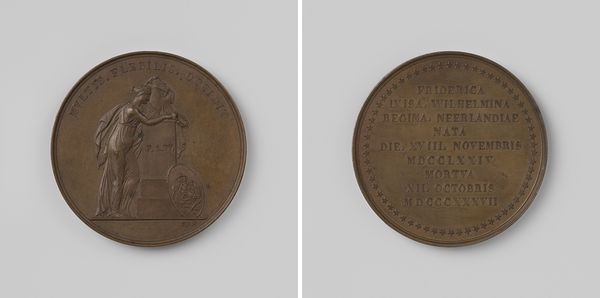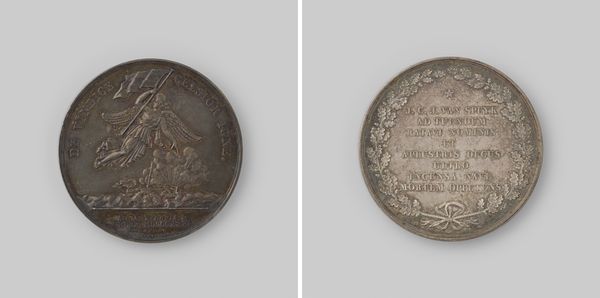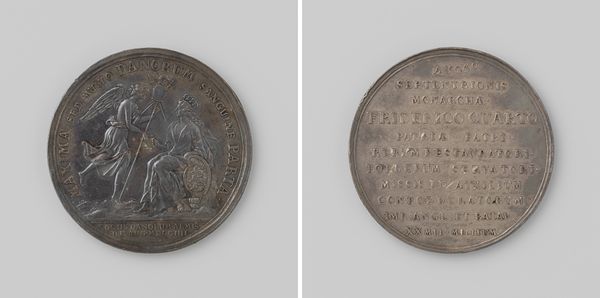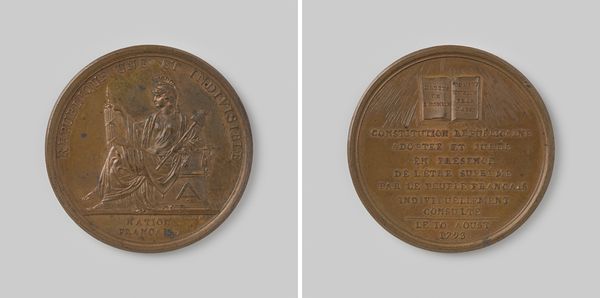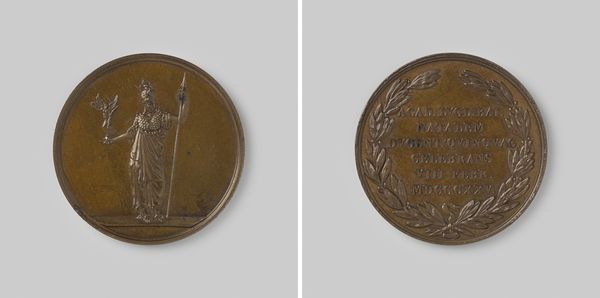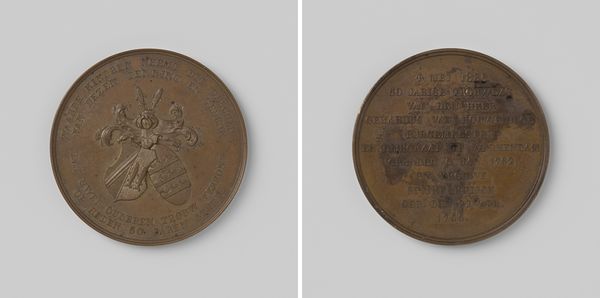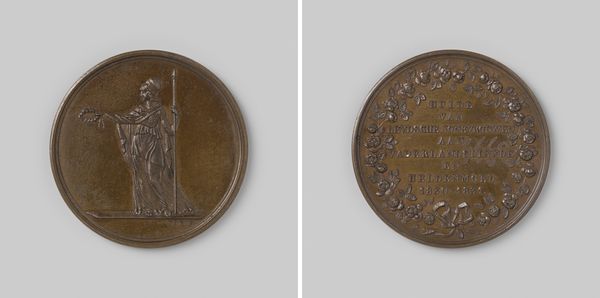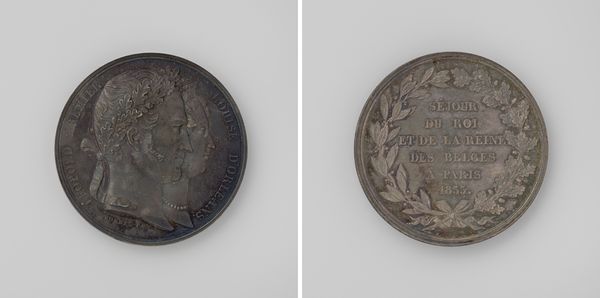
metal, relief, bronze, sculpture
#
portrait
#
metal
#
sculpture
#
relief
#
bronze
#
sculpture
#
history-painting
#
academic-art
#
statue
Dimensions: diameter 3.0 cm, weight 12.86 gr
Copyright: Rijks Museum: Open Domain
Curator: Here we have Leopold Wiener’s bronze relief, “Unveiling of the Statue of Vesalius in Brussels, 1847,” though it actually dates to around 1830. Editor: My first thought is one of gravity and commemoration; there is an echoing bronze solemnity in this medal, though somewhat undermined by the circular format that feels intrinsically decorative. Curator: Indeed, bronze has long served as a potent material for enduring memory. Medals like this served not just as commemorative objects but as carriers of cultural values. The very choice of Vesalius is telling. He was a groundbreaking anatomist whose work revolutionized medicine. By unveiling his statue, Brussels and Belgium more broadly, were aligning themselves with Enlightenment values. Editor: From a structural standpoint, there’s an interesting play of textures at work. The figure of Vesalius, slightly raised, emerges from a field of text, and from the very ground that he’s standing on, both. A ground on which some writing and symbols seem to be carved? The texture in this figure versus text draws me to this sculpture Curator: Those textural contrasts heighten the symbolic weight. Vesalius himself is presented in careful detail. He holds an object in one hand, likely a medical instrument or perhaps a book, emblems of knowledge and progress. The text that surrounds him, "Inaugurat," refers to the act of bestowing honor. Then, on the flip side, further script to show who sanctioned its inauguration, King Leopold I, further connecting scientific achievement with royal patronage. Editor: This medal serves, in its own way, as a piece of history painting on a small scale, capturing and disseminating particular vision and power dynamics to a broad public Curator: Yes. Through the act of repeated imagery—each bronze striking could serve to reiterate a kind of national ethos—it speaks not just to an event, but the making of cultural memory. Editor: It prompts you to question just who decided what cultural icons should be celebrated in a given city and who could afford them, shaping the past according to present desires. Curator: Precisely. This has been a compelling piece to analyze – its deceptively simple form concealing complex historical and symbolic depths. Editor: Indeed, sometimes, it’s in the smallest details, where the deepest cultural messages are hidden, especially when looking back to consider who had the power and tools to write them.
Comments
No comments
Be the first to comment and join the conversation on the ultimate creative platform.
